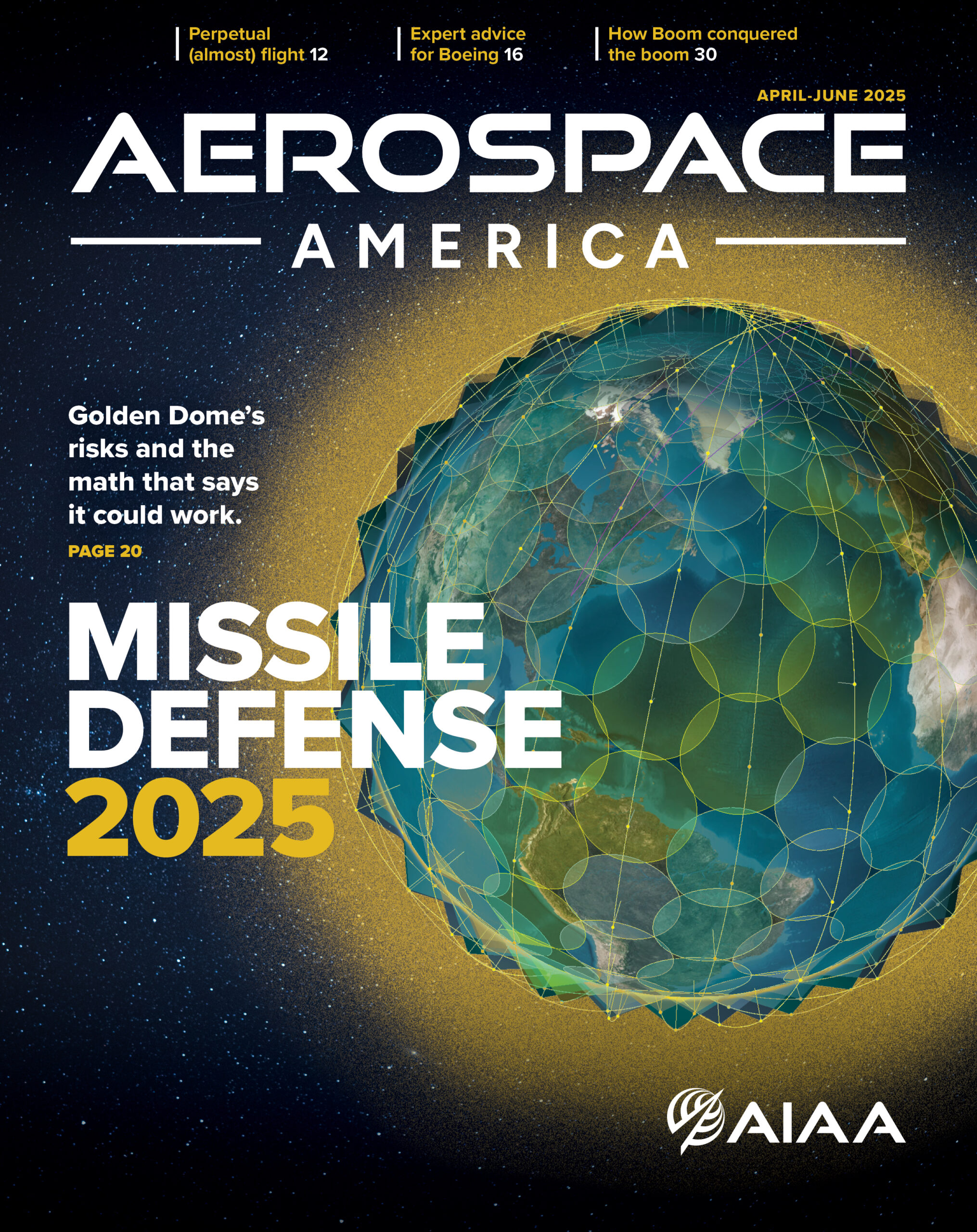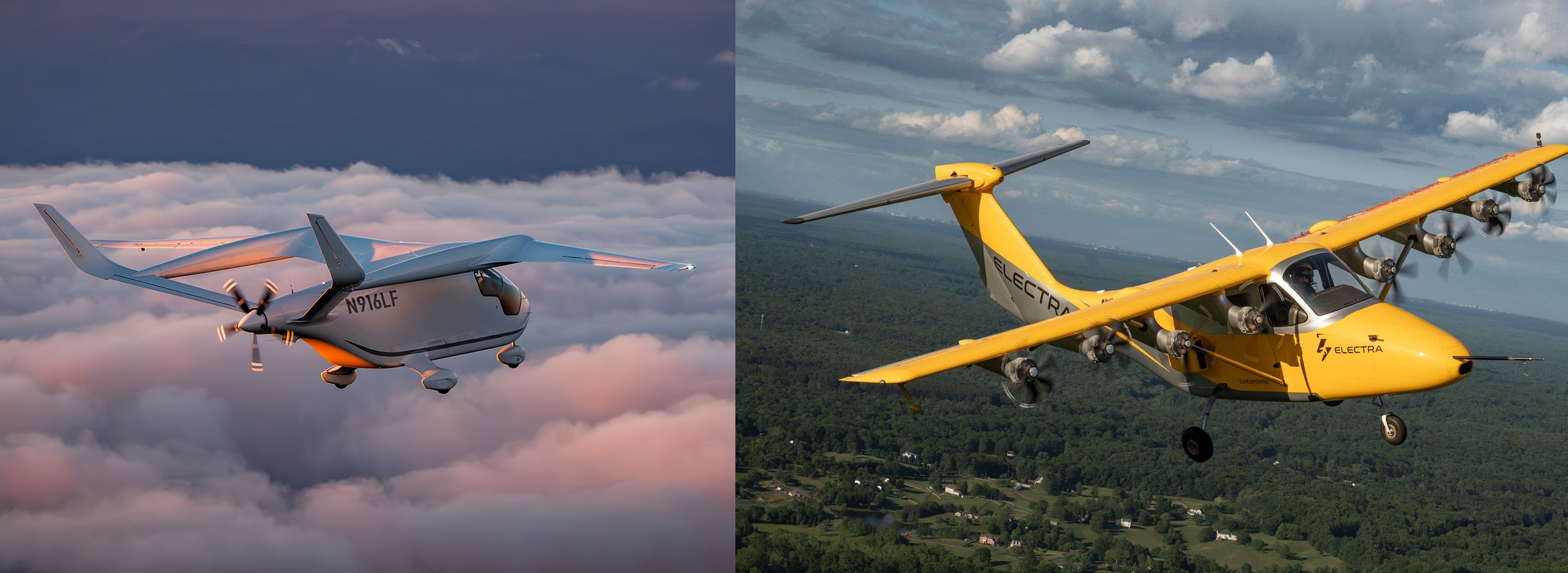Stay Up to Date
Submit your email address to receive the latest industry and Aerospace America news.
AIAA SCITECH FORUM, ORLANDO, Fla. — The ultimate vote of confidence in the design of an electrified aircraft could be when the founder climbs aboard the craft and goes airborne. The leaders of developers of two such aircraft gave personal testimonials here about doing just that.
John Langford, the founder and chairman of Electra, flew aboard the company’s two-seat EL-2 Goldfinch short-takeoff-and-landing demonstrator on Dec. 8 in a flight over Manassas, Virginia, home to the company’s headquarters. That was the same day that NASA Administrator Bill Nelson flew aboard the EL-2, piloted in both cases by Chief Test Pilot Cody Allee.
The EL-2 is a precursor to the nine-passenger EL9 Ultra Short that the company plans to sell for regional passenger or cargo jaunts of up to 600 kilometers, and to the military.
For more about advanced air mobility, receive the True Mobility newsletter in your inbox.
EL-2 takes off in as little as 45 meters and climbs steeply, as will the EL9.
“Finding out what passengers think it’s like to fly in this” will be key to gauging commercial success, Langford said. “I was so eager to be able to get in the right seat and have the chance to experience it.”
Goldfinch’s propellers blow air at the wing, a technique that boosts aerodynamic lift, resulting in short takeoff and landing and the ability to operate from grass fields. On takeoff, the plane’s nose tilts up suddenly and dramatically.
“The acceleration to that point is really not that remarkable. It is certainly not a launch off an aircraft carrier. It is a little under a half a G [force], nose off the ground in less than four seconds,” Langford said. “After that, it is very much like you’re in an elevator. The nose does come up, so you don’t really see the horizon looking out the front.”
“Once you’re past the takeoff phase, it’s very much like flying in a light airplane,” he said.
The aircraft is hybrid-electric, meaning the propellers are capable of running only on lithium-ion batteries, but the plane also has a gas turbogenerator in the nose to charge the batteries in flight or provide electric current directly to the motors.
Meanwhile, in Vermont, Kyle Clark, CEO and founder of BETA Technologies, has piloted the company’s all-electric planes many times: the ALIA vertical takeoff and landing aircraft, and also the CX300 conventional takeoff and landing craft.
Clark showed a video of an ALIA test flight in which he accomplished an inflight transition from vertical takeoff (powered by four rotors and a rear pusher propeller) to forward flight with only the rear propeller turning .
Like the Goldfinch, the ALIA took off at an angle, accelerating for just a few seconds to 75 kph. At 150 kph, “you stop the rotors,” Clark said. “They position in place like a javelin, pointed into the wind. And that’s to get to a low-drag configuration.”
For landing, “you do just the opposite,” he said. “You slow down at just above stall speed. You turn the rotors on.” Onboard software stabilizes the aircraft during the transition phase, he said.
“And then you decelerate, because there’s quite a lot of drag that’s created when you’re flying forward with the rotors on. About 30 seconds later, you set the thing down, a lot like a helicopter.”
Clark said it’s an “an amazing feeling when you’re flying and you shut the rotors off,” and yet the aircraft continues forward.
BETA, like Electra, plans to fly its aircraft for regional passenger travel and cargo.
Clark also described piloting an ALIA aircraft around the Statue of Liberty during a demonstration as an “awesome experience” that showed the company’s confidence in all the testing it has done.
“You don’t go flying down the Hudson with a billion dollars of capital thinking it’s going to drop in the water,” he said, referring to developmental costs paid for by investors in BETA, a privately owned company.
Clark said the company still intends that its aircraft will be flown for organ transplant transport and by UPS for cargo, in addition to passenger service. He said BETA has made great progress but “We’re just getting warmed up, building our production aircraft. We have a long way to go to do something fun and meaningful, but this is where we are.”
About paul brinkmann
Paul covers advanced air mobility, space launches and more for our website and the quarterly magazine. Paul joined us in 2022 and is based near Kennedy Space Center in Florida. He previously covered aerospace for United Press International and the Orlando Sentinel.
Related Posts
Stay Up to Date
Submit your email address to receive the latest industry and Aerospace America news.




